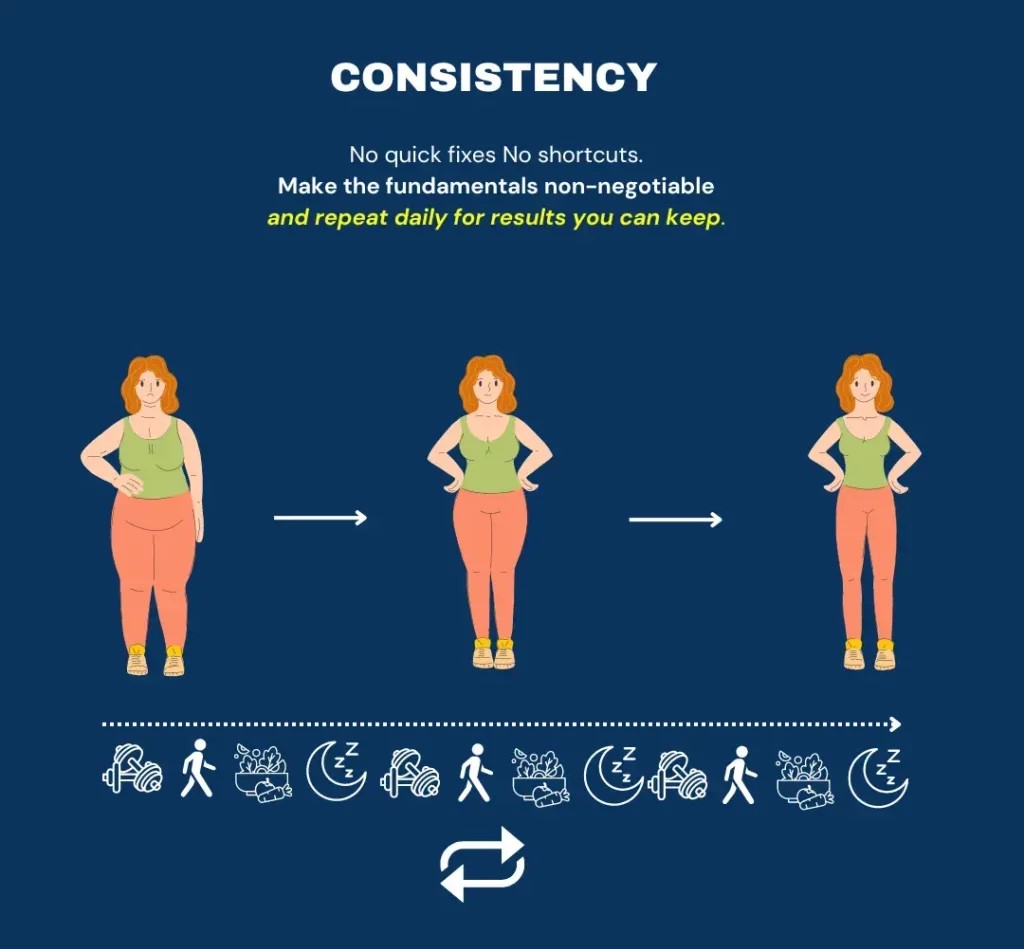
Starting your fitness journey can be both exciting and overwhelming. With so much information out there about workouts, diets, and fitness plans, it’s easy to feel lost before you even begin. But the key to long-term success in fitness isn’t about jumping into the latest trends or following extreme routines—it’s about creating a sustainable fitness plan that works for you.
At GSFithub, we believe in empowering beginners with the knowledge and tools they need to build a lasting, effective fitness routine. Here’s a beginner’s guide to help you create a fitness routine that you can stick to for the long haul.
Start with Clear, Realistic Goals
Before you lace up your sneakers or hit the gym, it’s important to define what you want to achieve. Setting clear, achievable goals helps you stay motivated and track your progress over time.

Your goals could be:
- Weight loss: Aiming to shed a certain number of pounds or inches
- Muscle gain: Building lean muscle and increasing strength
- Endurance: Improving cardiovascular fitness and stamina
- Flexibility: Enhancing your range of motion and preventing injuries
- Overall health: Simply becoming more active and improving energy levels
Make sure your goals are SMART—Specific, Measurable, Achievable, Relevant, and Time-bound. For example, instead of saying, “I want to lose weight,” a SMART goal would be, “I want to lose 5 pounds in the next 8 weeks by exercising three times a week and eating healthier.”
Find a Workout Routine You Enjoy
Consistency is the foundation of a sustainable fitness routine, and you’re more likely to stick to something you enjoy. Fitness isn’t a one-size-fits-all approach, so take some time to experiment with different types of exercise until you find what excites you.

Some options include:
- Strength Training: Lifting weights or using resistance bands to build muscle
- Cardio: Running, cycling, swimming, or high-intensity interval training (HIIT) to improve heart health
- Group Fitness Classes: Zumba, yoga, or spin classes for a social, fun environment
- Bodyweight Exercises: Squats, push-ups, planks, and lunges that you can do anywhere
- Functional Training: Exercises that mimic everyday movements, improving overall mobility and strength
Try different classes or activities at your gym or work with a personal trainer to discover what feels best for you. Finding enjoyment in your workouts is key to making fitness a long-term habit.
Create a Balanced Workout Plan
A well-rounded fitness routine should include a balance of different types of exercises to improve your overall health. Here are the core components of a balanced plan:

- Strength Training (2-3 times per week): Focus on major muscle groups—legs, back, chest, and arms. Strength training increases muscle mass, boosts metabolism, and helps with body toning.
- Cardiovascular Exercise (2-3 times per week): Engage in activities that get your heart pumping, like running, cycling, or jumping rope. This helps improve heart health, burn calories, and boost endurance.
- Flexibility and Mobility (daily or as needed): Stretching, yoga, or Pilates can improve your range of motion, flexibility, and posture while reducing the risk of injury.
- Rest Days (1-2 times per week): Rest is just as important as exercise. It allows your muscles to recover and grow, prevents burnout, and reduces the risk of overuse injuries.
You don’t need to do all of these every day. Plan your week by alternating workouts to give your body time to recover while staying active.
Start Slow and Build Gradually
One of the biggest mistakes beginners make is diving into intense workouts too quickly. This can lead to injury, burnout, or simply feeling overwhelmed. Instead, start slow and allow your body to adapt.

- Start small: If you’re new to fitness, aim for just 20-30 minutes of exercise, 3-4 times per week.
- Focus on form: Proper technique is more important than the amount of weight or reps you do. Good form prevents injuries and helps you get the most out of each exercise.
- Increase gradually: As you build strength and stamina, gradually increase the intensity or duration of your workouts. Add more weight, increase the time spent on cardio, or challenge yourself with more reps.
The key is to progress steadily rather than trying to do too much, too soon.
Incorporate Active Recovery

Recovery is essential for muscle growth and overall fitness. Many beginners overlook the importance of rest days, thinking they need to work out every day to see results. However, incorporating active recovery—such as light walking, stretching, or yoga—on your rest days can enhance recovery, reduce muscle soreness, and keep you energized for your next workout.
Be mindful of how your body feels. If you’re fatigued or experiencing soreness, listen to your body and give yourself time to recover. A well-rested body performs better in the long run.
Pair Fitness with Proper Nutrition

Exercise alone won’t get you the results you want. Proper nutrition is just as crucial to your fitness journey. Focus on eating a balanced diet that fuels your workouts and supports your recovery:
- Protein: Helps repair and build muscles after strength training
- Carbohydrates: Provide energy for your workouts
- Healthy fats: Support overall cell function and hormone production
- Hydration: Drink plenty of water to stay hydrated before, during, and after your workouts
Avoid crash diets or extreme calorie restrictions. Instead, aim for a balanced, nutrient-rich diet that gives you enough energy to sustain your workouts and overall well-being.
Stay Consistent and Adapt as Needed
Consistency is the most important factor in maintaining a sustainable fitness routine. While motivation can come and go, building a habit is what keeps you going long-term.

Here are some tips to stay consistent:
- Create a schedule: Set specific days and times for your workouts and treat them as non-negotiable appointments.
- Track your progress: Keep a workout journal or use fitness apps to monitor your improvements in strength, endurance, and overall fitness. This helps keep you motivated.
- Celebrate small wins: Whether it’s lifting a heavier weight, running a longer distance, or staying consistent for a month, celebrate your progress. These milestones are a reminder that you’re on the right path.
Remember, life can get busy, and sometimes you may need to adjust your routine. Don’t be too hard on yourself if you miss a workout. Stay flexible and adapt your plan as needed, but keep showing up.
Conclusion: Building a Sustainable Fitness Routine
Creating a sustainable fitness routine is not about quick fixes or drastic changes—it’s about building small, consistent habits that you can maintain for life. By setting clear goals, finding workouts you enjoy, and balancing fitness with proper nutrition and recovery, you’ll set yourself up for long-term success.
At GSFithub, we’re here to guide you every step of the way, whether you’re just starting or looking to enhance your current routine. Our personalized fitness plans, expert trainers, and supportive community will help you create a sustainable and enjoyable fitness journey that lasts.
Start today, and remember—fitness is a journey, not a destination. Keep going, and the results will follow!
